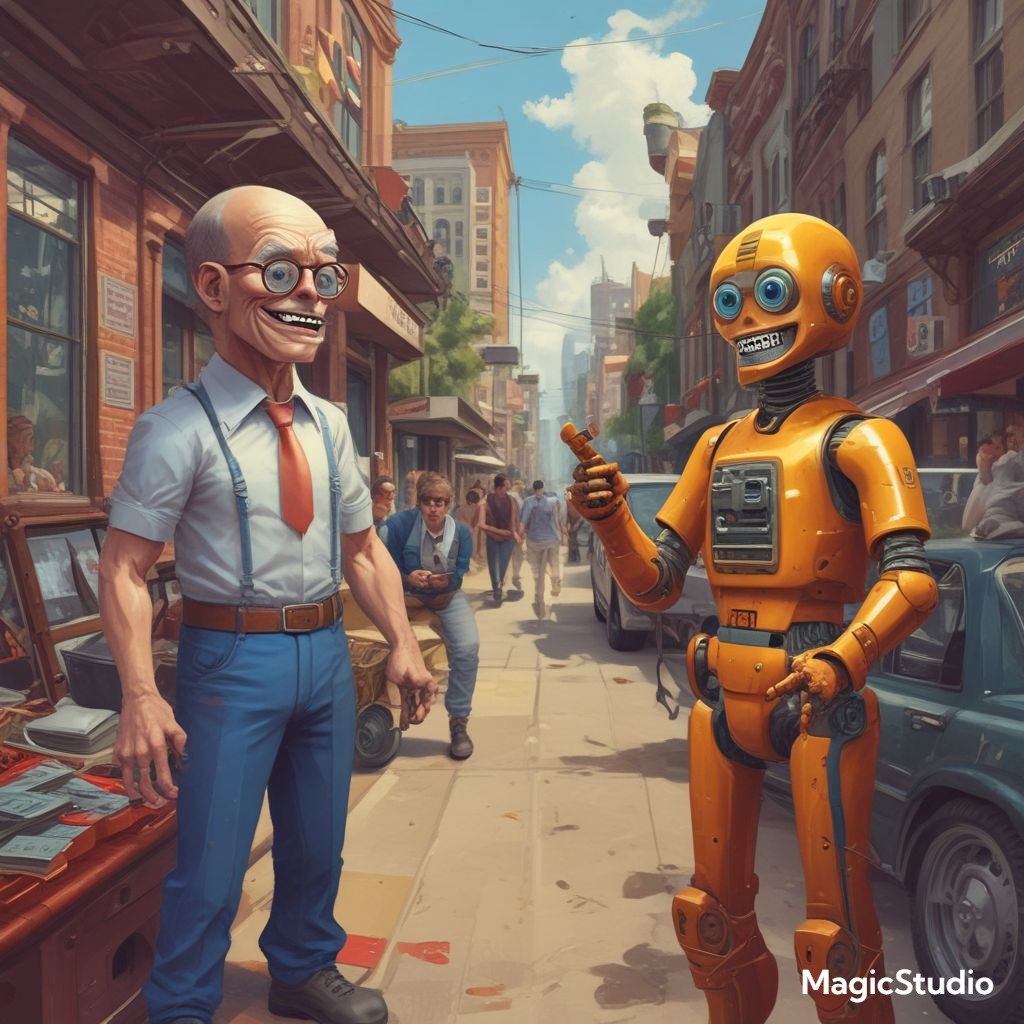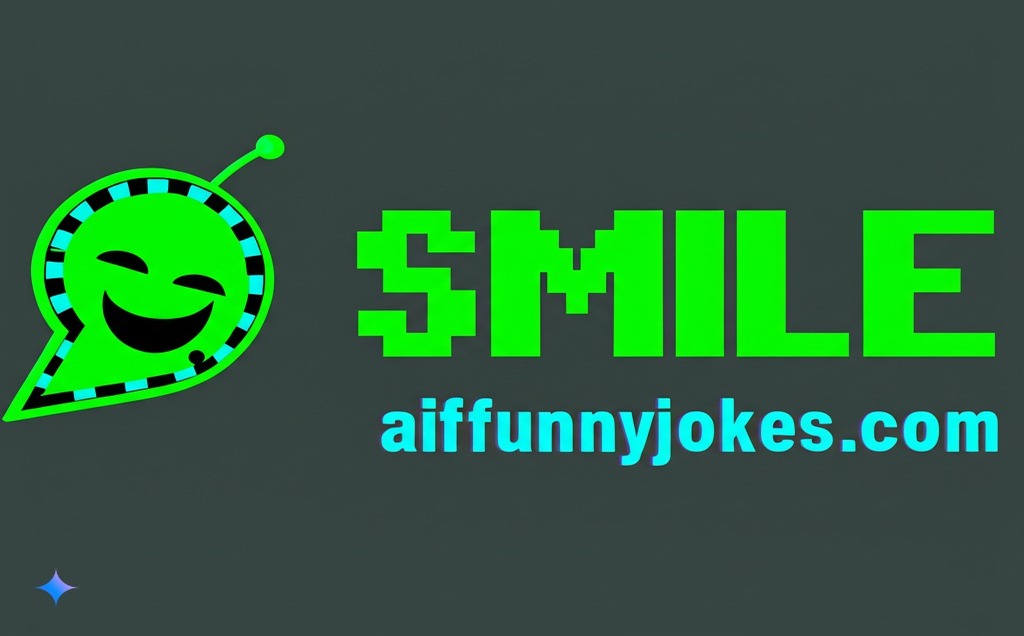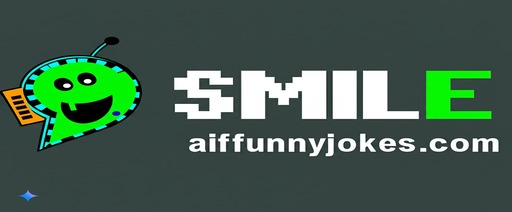
Hey! You know how the evolution of AI joke generators has been such a wild journey? Computers used to just be boring boxes that did math and stored files, but these days they’re trying to crack jokes too! It’s been pretty amazing watching AI go from total joke-failure to actually making people laugh. Kind of like watching your awkward friend slowly get better at telling jokes at parties. Let’s chat about how these computer comedians have evolved over the years – from total cringe to occasionally funny!
The Awkward Early Days of AI-generated jokes
Back in the 1960s, computers were about as funny as a flat tire in the rain. ELIZA, one of the first chatbots from 1966, wasn’t even trying to be funny, but sometimes it accidentally made people laugh with its robotic responses:
“I’m feeling sad today.”
ELIZA: “WHY ARE YOU FEELING SAD TODAY?”
“Because my computer doesn’t understand me.”
ELIZA: “YOUR COMPUTER DOESN’T UNDERSTAND YOU?”
Not exactly stand-up comedy material, right? But this was the very beginning of the history of AI trying to be funny. These early computer programs:
- Couldn’t understand jokes people told them
- Had no idea about timing or delivery
- Didn’t know anything about culture or what people found funny
- Were basically clueless about humor, like a robot at a comedy club

The 1990s: First Real Attempts at Computer Comedy
By the 1990s, researchers started taking computational humor seriously. The JAPE system (Joke Analysis and Production Engine) created in 1996 was one of the first programs specifically designed to make jokes. It focused mostly on simple puns:
“What do you call a cow with no legs? Ground beef.”
“What’s the difference between a jeweler and a jailer? One sells watches and one watches cells.”
Still pretty basic, right? But think about this – for the first time, a computer was actually trying to make humans laugh on purpose! Some interesting things about these early joke systems:
- They focused mainly on wordplay and puns
- They worked by following strict patterns and rules
- They couldn’t tell if their jokes were actually funny
- They had a limited “vocabulary” of joke types
This period was a big step in the history of AI humor because scientists started figuring out what makes things funny in a way computers could understand. They realized humor often involves:
- Unexpected connections between different ideas
- Playing with words that have multiple meanings
- Subverting people’s expectations
- Social and cultural knowledge
If you’re into short jokes like these early AI attempts, you might enjoy checking out some modern one-liners that follow similar patterns but with much more cleverness.
The 2000s: Algorithms Start Getting Funnier
In the early 2000s, machine-generated punchlines got a little better. A program called STANDUP (System To Augment Non-speakers’ Dialogue Using Puns) was created at the University of Edinburgh to help kids with communication difficulties practice language through humor.
Some of STANDUP’s jokes were actually not too bad:
“What do you call a spicy missile? A hot shot!”
“What’s the difference between a pretty glove and a silent cat? One’s a cute mitten, the other’s a mute kitten.”
This period in the evolution of AI joke generators showed real progress. Computers were starting to:
- Understand more complex wordplay
- Create jokes with more sophisticated structures
- Consider the audience (in this case, children)
- Produce content that humans might actually chuckle at
During this time, we also saw the first joke generators appear online that regular people could use. Most of them worked by:
- Using templates like “Why did the ___ cross the road?”
- Randomly inserting words into pre-written joke formats
- Mixing and matching punchlines with setups
- Creating jokes based on simple rules rather than true understanding
If you’re curious about how these compare to today’s AI jokes about technology itself, check out these short funny jokes about AI – the self-referential humor is something early systems could never have managed!

The 2010s: Big Data Brings Better Jokes
As we entered the 2010s, the evolution of AI joke generators took a major leap forward thanks to big data and machine learning. Instead of following strict rules about what should be funny, AI systems could now study thousands of real jokes to learn patterns.
In 2013, researchers developed a system for “I like my X like I like my Y…” jokes:
“I like my coffee like I like my war… cold.” “I like my relationships like I like my source code… open.”
Some were surprisingly clever, others made no sense at all. But AI humor was getting more:
- Natural-sounding
- Unpredictable (sometimes in good ways!)
- Varied in terms of joke structures
- Human-like in its approach to humor
Twitter bots became popular during this time too, with accounts like:
- @DadJokeBot sharing groan-worthy dad jokes
- @PunGenerators creating endless wordplay
- @JokesMachineGen mixing up joke formats with sometimes absurd results
- @BotComedy attempting to understand trending topics and make jokes about them
These bots would sometimes produce gems like:
“I told my wife she was drawing her eyebrows too high. She looked surprised.”
“What’s the best thing about Switzerland? I don’t know, but their flag is a big plus.”
Looking for some kid-friendly AI humor in this style? You might enjoy these super silly funny jokes for kids that capture that same innocent humor style that was emerging in this era.
Neural Networks Learn to Laugh (2015-2020)
Around 2015, a big change happened in the artificial intelligence comedy world – neural networks got involved. These are computer systems that try to mimic how our brains work, and they brought AI humor to a new level.
An early neural joke generator might come up with:
“Why don’t scientists trust atoms? Because they make up everything!”
“What do you call a fake noodle? An impasta!”
These systems represented a huge leap forward in the timeline of AI-generated humor from ELIZA to ChatGPT. They were:
- Learning from millions of examples of human jokes
- Understanding patterns that weren’t obvious even to the programmers
- Creating jokes that sometimes genuinely surprised people
- Developing a sort of “taste” for what might be funny
One fascinating project during this time was the New Yorker Cartoon Caption Contest Bot, which tried to generate funny captions for the magazine’s famous cartoons. It would suggest things like:
“I’d like to add you to my professional network on LinkedIn.”
The funny thing? Sometimes its completely absurd captions were actually funnier than the human submissions!
During this period, researchers also started looking at humor across different cultures and languages. Some interesting findings:
- Puns are harder for AI to generate in languages like Chinese that have different wordplay traditions
- Cultural references make joke generation much more difficult
- Some humor styles translate well across cultures, while others don’t
- Visual humor (like memes) became a new frontier for AI comedy
If you’re interested in how AI handles different types of humor, check out these hilarious AI robot jokes that play with our expectations of machine intelligence.
Modern AI Joke Generators (2020-Present)
In recent years, the evolution of AI joke generators has accelerated dramatically. Large language models like GPT-3, GPT-4, and ChatGPT have changed the game completely. These systems:
- Have “read” massive portions of the internet, including jokes, comedy, TV shows, and more
- Understand context much better than previous generations
- Can adapt their humor to different audiences
- Can even explain why something might be funny
Today’s AI can generate jokes like:
“I told my computer I needed a break. Now it won’t stop sending me Kit Kat ads.”
“What’s a robot’s favorite type of music? Heavy metal!”
“Why don’t programmers like nature? It has too many bugs.”
The difference between these and earlier jokes is that modern AI can:
- Create original jokes, not just fill in templates
- Understand more sophisticated humor concepts like irony
- Adjust the joke style to match different requests
- Learn from feedback about what works and what doesn’t
Modern AI can even handle specialized humor like profession-specific jokes that require understanding the unique challenges and inside jokes of different careers.

How AI-generated jokes Are Used Today
Today, AI joke generators aren’t just research projects – they’re being used in lots of different ways:
- Social media content creation
- Chatbots and virtual assistants with personality
- Entertainment apps specifically designed for humor
- Writing assistance for human comedians
- Educational tools that make learning more fun
Some companies have even created chatbot humor assistants specifically designed to help people:
- Break the ice in conversations
- Create funny content for presentations
- Generate personalized birthday cards or messages
- Come up with original jokes for speeches
Want to see the kinds of jokes these systems can create? Check out these top 20 funny AI jokes that showcase what modern systems can do.
The Funny Failures: When AI Jokes Go Wrong
Of course, not all AI jokes land well. Sometimes they miss the mark in hilarious ways! Some common AI joke fails include:
- Completely misunderstanding what makes something funny
- Creating accidentally offensive content
- Making jokes that make no logical sense
- Explaining the punchline and ruining the joke
For example, an AI might generate something like:
“Why did the scarecrow win an award? Because he was outstanding in his field! A field is both a place where crops grow and can mean an area of expertise, creating wordplay.”
(Nothing kills a joke like explaining it, right?)
Or sometimes AI creates jokes that are so bad they circle back around to being funny:
“What do you call a fish with no eyes? A fsh.”
“Why don’t scientists trust stairs? Because they’re always up to something down.”
These failures are actually important for computational humor research because they help us understand what AI still doesn’t get about human humor.
If you enjoy these kinds of AI comedy misfires, you’ll love these funniest AI joke fails that show even smart machines can be accidentally hilarious.

The Future of AI joke generators
Where is the evolution of AI joke generators headed next? Some exciting possibilities include:
- AI that can understand cultural nuances better
- Systems that can create humor across multiple languages
- AI that can generate visual jokes and memes
- Personalized humor that learns what makes YOU specifically laugh
- Interactive joke-telling that adjusts based on your reactions
Researchers are already working on AI that can understand:
- Body language and facial expressions when telling jokes
- Timing and delivery
- When humor is appropriate vs. inappropriate
- How to build up a joke over time
If you’re curious about how AI might help with your own comedy writing, check out this AI comedy writing assistant that shows how humans and machines can collaborate on humor.
Can AI Ever Truly Be Funny?
As we look at the complete timeline of AI-generated humor from ELIZA to ChatGPT, it raises an interesting question: Can AI ever truly understand humor the way humans do?
Some argue that humor requires:
- Consciousness and self-awareness
- Real-life experiences and emotions
- Understanding of suffering and joy
- A genuine connection with other beings
Others believe that if AI can consistently make people laugh, then it doesn’t matter if it “understands” humor in the same way we do.
This philosophical question gets at the heart of what makes us human. Is humor something that makes us uniquely human, or is it just another pattern that machines can learn to mimic?
For an interesting exploration of this question, check out can AI be funnier than humans? which dives into this ongoing debate.

Conclusion: The Ongoing Evolution of AI Joke Generators
From ELIZA’s accidental humor to today’s sophisticated comedy algorithms, the evolution of AI joke generators has come a long way. What started as simple word substitution has grown into systems that can create original jokes, understand context, and even adapt to different audiences.
As AI continues to develop, we can expect its sense of humor to evolve as well. Will AI ever become the next great stand-up comedian? Probably not soon. But it’s already helping humans be funnier, creating moments of joy, and teaching us something about what makes us laugh.
And isn’t that what good comedy is all about? Making connections, surprising us, and bringing a little more laughter into the world – even if it comes from a machine.
So the next time you ask Siri or Alexa to tell you a joke, remember you’re experiencing just the latest chapter in the long and fascinating history of AI humor. And this story is far from over!
What do you think about AI comedy? Do you have a favorite AI-generated joke? Share in the comments below!

